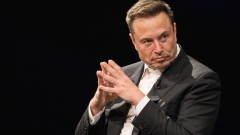Mar 28, 2023
Trudeau ramps up spending in race to keep up with U.S. subsidies
, Bloomberg News
Federal budget positive for energy sector but Ottawa can’t tax their way to prosperity: Rona Ambrose
Prime Minister Justin Trudeau’s government is pumping billions of dollars into clean energy subsidies and health care, despite a gloomy forecast of slow economic growth and weaker tax revenue.
The federal budget released Tuesday aims to jump-start an energy transition that will, over time, generate new growth and help offset the steep cost of the subsidies. But Finance Minister Chrystia Freeland is also proposing to run larger deficits at a time many economists are still concerned about high inflation and the prospect of a recession.
The budget adds $43 billion in net new costs over six years, even as the government projects about $34 billion less in revenue compared with forecasts in November. The end result is a significantly higher deficit each year through 2028, and no prospect of a balanced budget in sight.
Weaker growth means income taxes will come in lower than expected, while debt charges are rising amid higher interest rates and elevated borrowing.
The budget outlines large increases to health-care spending, including more cash for provincial governments announced earlier this year, and a $13-billion dental-care plan that Trudeau’s Liberals promised in exchange for support in parliament from the left-leaning New Democratic Party.
Freeland is also rolling out substantial new green incentive programs to compete with the Inflation Reduction Act signed into U.S. law last year by President Joe Biden. The largest new subsidy in the budget is an investment tax credit for clean electricity producers, but it also includes credits for carbon capture systems, hydrogen production, and clean-energy manufacturing.
Overall, the budget promises $31.3 billion in net new health-care spending and $20.9 billion in net new green incentive spending by 2028. On top of that is $4.5 billion in affordability measures, with half of that booked for an extension of a sales tax credit for low-income Canadians.
The spending is partially offset by tax increases on financial institutions and wealthy Canadians, and a pledge to reduce government spending on travel and outside consultants.
Freeland defended the new spending and said the budget remains fiscally responsible even with the increased deficits.
The finance minister told reporters that not swiftly responding to the generous new U.S. green incentives risks “consigning Canada to deindustrialization.”
The deficit for the fiscal year ending March 31 is now projected at $43 billion, up from the $36.4 billion forecast in November’s budget update. It could have been even higher, but the government booked billions in savings this year due to lower spending on COVID supplies such as vaccines, therapeutics and testing kits.
But there is an extra $6 billion in spending on average in each of the next five years, and combined with falling income tax revenue it creates much larger deficits going forward. In last year’s budget, the government forecast a $4.5 billion surplus in 2028; that is now projected to be a $14 billion deficit.
Furthermore, the slowdown in growth means Canada’s debt-to-GDP ratio gets worse next year, despite the government’s reliance on this measure as a fiscal anchor.
Debt-to-GDP will rise from 42.4 per cent this year to 43.5 per cent next year, and is projected to decline very slowly over the next five years.
“It remains an expansionary fiscal plan in a worsening economic environment,” Dominique Lapointe, director of macro strategy for Manulife Investment Management, said in an interview.
He said the most likely scenario lies between the government’s base case and a more pessimistic outlook. “This puts downward pressure on revenue, and could lead to higher-than-expected borrowing,” Lapointe said.
--With assistance from Danielle Bochove and Randy Thanthong-Knight









